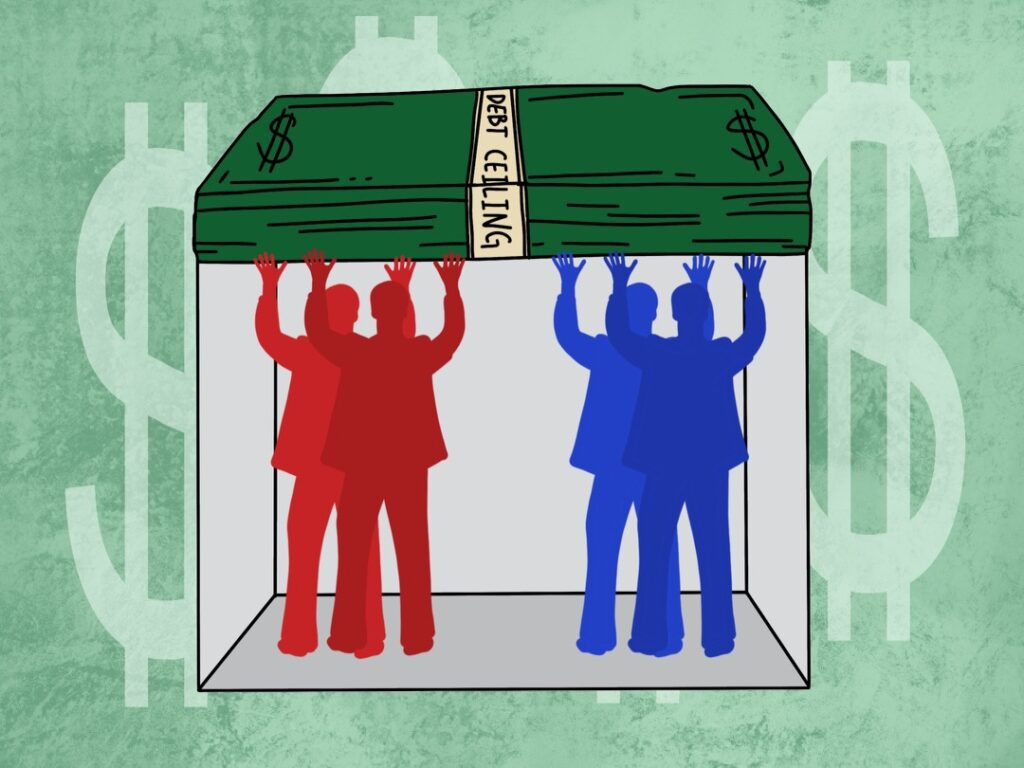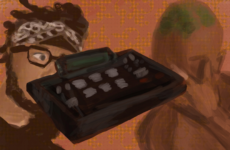
Graphic by Andra Ionescu ’24/The Choate News
With the national debt rising by trillions in past years, it is easy for us to forget that there is a ceiling to the height of that number. But as the debt approaches the limit once again, it has come to the front of many citizens’ and politicians’ minds.
The debt ceiling, established in 1917, has served as a technicality with the effect of delegating more power to the federal reserve, leaving Congress with the authority to set only the level of debt the U.S. could take on. Now, more than 100 years later, the debt ceiling has been weaponized by politicians — mostly conservative — putting the global economy at risk of a catastrophic collapse.
The issue of debt has long been a talking point for Republicans, founded on the idea of careless spending by Democratic politicians. On the other side, Democrats insist that national debt is a necessary consequence that comes with improving the social programs. But Democrats aren’t the only ones at fault. The debt is similarly pushed by Republicans in the form of foreign wars and massive tax cuts to the ultra-wealthy, leading to a lower tax revenue.
When we look at the numbers, Republicans and Democrats add similar amounts to the national debt. George W. Bush and Trump added $12.7 trillion to the debt while Obama and Biden added $13 trillion. Further complicating the issue, the main source of Republican spending — the so-called “wars on terror” in the Middle East — served as an ambiguous name created as a facade to justify unnecessary intervention and execute partisan foreign policy.
This moral aspect further contributes to the argument that Republicans hold equal if not more responsibility for the debt issue, shedding light on the misrepresentation of intent coming from the right. Despite evident culpability, the Republican Party continues to make itself out as the hero in the situation, fighting against an institutional problem that will destroy the following generation.
Now, in January 2023, we have hit the debt ceiling, but instead of the routine raising of the level, an increasingly polarized Congress has stopped making progress due to an inability to cooperate. After last November’s midterm elections, the Republican Party holds a slim 10-seat majority in the House of Representatives, a crucial position for passing legislation like the debt ceiling.
Given these numbers, conservatives cannot make progress without the concurrence of almost all Republican representatives, which leads to countless party concessions to the far-right in order to move forward on legislation. In the context of the debt ceiling, this has meant coming dangerously close to the U.S. defaulting on its liabilities. Much of the U.S. debt is held up in bonds, securities that promise to pay back loaned funds supplied by corporations, governments, and individual investors at a later date.
Due to the historic stability of the U.S. Treasury, these bonds are considered to be a backbone for the global economy. Needless to say, defaulting on these loans would have catastrophic consequences for the entire world. Even with the stakes this high, Republicans continue to hold the global economy hostage for their legislative demands.
Furthermore, last August, the U.S. had its long-term debt rating downgraded, sending a clear message: division in the American government is creating immense damage to the country’s global reputation and future prosperity. This situation represents the extent to which polarization has taken hold in Congress and the lengths to which political parties will go to execute their legislative will.
U.S. politicians are becoming more and more distant from their constituency. While Democrats are lacking in cooperation, more often than not, the Republicans are stopping logical and necessary legislation from moving forward. Where we go from here is unclear, but one thing is certain: to prioritize the whole country’s future, we need concessions from more than one side of the aisle.




